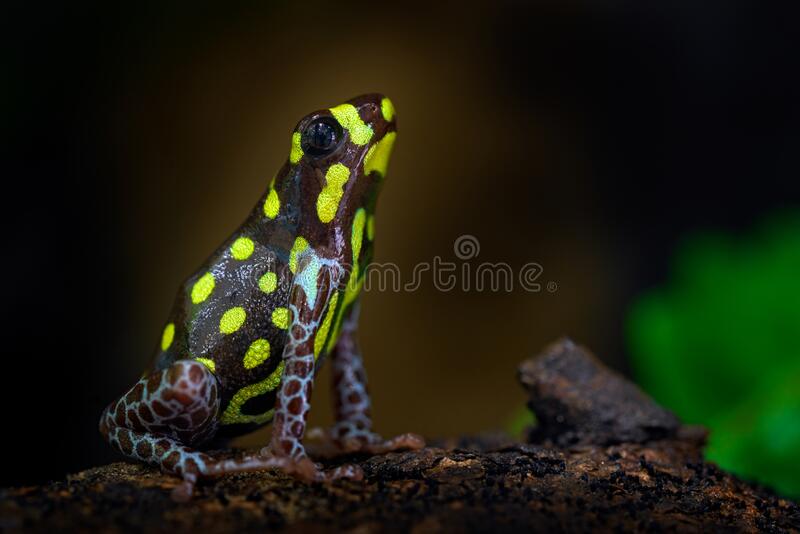ANIMAL: Brazilian Poison Frog Ranitomeya vanzolinii Type of Animal: Frog Habitat: Rainforest Location(s): E Peru, W Brazil, & small parts of Bolivia Appearance: Small frog, black w/ yellow to orange spots & blue-black reticulated legs, dark eyes Food/Diet: Ants, termites, mites, beetles, crickets, fruit flies, worms, insect larvae, tadpoles (including of own species). Tadpoles also eat algae & detritus as well as each other & unfertilized frog eggs. Status in Wild: Stable Conservation: Breeding in zoos, aquariums, & herpetoculture Lifestyle: Small groups of 2-6 frogs Additional Info: Called: Male Female Young: Tadpole Group: Army Weight: Male: 0.04 oz Female: 0.045 oz Gestation: 1-2 weeks Life Span: 5-8 years Body Length: Male: 0.65-0.69 in Female: 0.7-0.75 in Due to skin toxins, only a few snakes successfully eat them. Active during the day (diurnal). Also called Spotted Poison Frogs & Yellow-Dotted Poison Frogs. Coloration serves as warning to potential predators. Capture prey using sticky tongue. Like all Poison Frogs, they have good eyesight. Unlike many poison dart frogs, parents will return to feed tadpoles. Juveniles spend more time on ground while adults spend more time in tree understory. Females lay clutches of 1-6 eggs. Each watery tree hole typically has 1 tadpole to make sure they don’t eat each other, though sometimes there will be as many as 6 together. Tadpole stage lasts around 2 months. After that stage, they become froglets until adulthood reached at 5 months old. Males very vocal when trying to attract females, making loud trill-like calls. While stable in wild, these frogs smuggled in large numbers & habitat loss/destruction is a potential threat. Fun Fact(s): Each frog has own unique pattern, similar to human fingerprints. Like other poison dart frogs, these frogs have potential medical value due to toxins. Specific name vanzolinii honors Brazilian scientist & composer Paulo Vanzolinii. While poisonous in wild, they lose much/all toxicity in captivity due to diet. In captivity, they’re only fed nontoxic prey items like crickets & fruit flies. In wild, they eat lots of poisonous insects. Hunters use skin toxins on darts/arrows.
